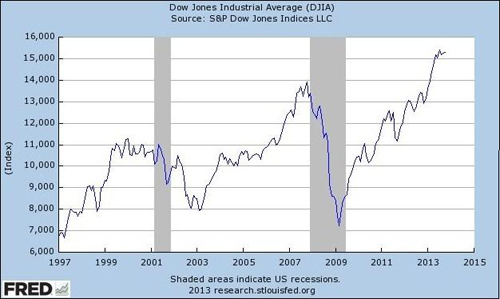By Pam Martens: November 5, 2013
 I’d like to go on the record that I think tweeting is to journalism what Pop Tarts are to breakfast. And I’d like to go one step further: to explain why Twitter is coming to market as an Initial Public Offering (IPO) right now, requires long-form journalism. Think about that. If an enlightened citizen is the best defense against a rigged Wall Street and a hollowed out democracy, how much enlightenment can one convey with a Twitter limit of 140 characters on your speech.
I’d like to go on the record that I think tweeting is to journalism what Pop Tarts are to breakfast. And I’d like to go one step further: to explain why Twitter is coming to market as an Initial Public Offering (IPO) right now, requires long-form journalism. Think about that. If an enlightened citizen is the best defense against a rigged Wall Street and a hollowed out democracy, how much enlightenment can one convey with a Twitter limit of 140 characters on your speech.
There are mushrooming signs that this stock market is being artificially hyped in much the same way that the dot.com mania was delivered to the public.
Consider this excerpt from the Wall Street paper of record, the Wall Street Journal, from two days ago:
“ ‘After all these years of the market going up, investors are getting reacquainted with equities,’ said Alan Gayle, senior investment strategist at RidgeWorth Investments, which manages $49 billion in Atlanta. ‘In a slower-growth environment, the newer names are much more likely to be disruptive. Disruptive companies are more likely to grow their top line at a fast pace.’ ”
The operative words of market hype here are “After all these years of the market going up.” Let’s take stock for a moment. Suggesting that the market has been on a relentless upward trajectory for a long period of time is like saying the moon is made of cheese – it flips reality on its head.
Just how destructive the stock market has been to wealth accumulation for the little guy was captured in this seminal piece by E.S. Browning in the Wall Street Journal on March 26, 2008 under the title: “Stocks Tarnished by Lost Decade.” The reporter correctly noted:
“The stock market is trading right where it was nine years ago. Stocks, long touted as the best investment for the long term, have been one of the worst investments over the nine-year period, trounced even by lowly Treasury bonds…When dividends and inflation are factored into returns, the S&P 500 has risen an average of just 1.3% a year over the past 10 years, well below the historical norm, according to Morningstar Inc. For the past nine years, it has fallen 0.37% a year, and for the past eight, it is off 1.4% a year. In light of the current wobbly market, some economists and market analysts worry that the era of disappointing returns may not be over.”
Browning wrote this article in the spring of 2008. By September of that year, Wall Street was in shatters with some of the oldest firms on the street insolvent and collapsing. All those Wall Street pundits that had been advising investors to “stay in it for the long haul” had forgotten to mention that you can’t stay invested in companies for the long haul when they cease to exist or have their shareholder equity wiped out in receiverships or shot-gun weddings.
The recent quote in the Wall Street Journal from senior investment strategist Alan Gayle is brought into sharp focus by this Dow Jones Industrial Average chart from the web site of the St. Louis Federal Reserve. If you had any money left after the nose-bleed crash of 2008-2009 and somehow managed to get back in at the bottom in a broad-based index fund, you’ve done well in the last four years. So far, at least.
But more important than stock market statistics is how little has changed in terms of Wall Street’s ability to pump and dump, churn and burn and take the little guy to the cleaners. The same Wall Street firms that were charged with touting stocks to the public while calling them “dogs” and “crap” internally are still allowed to issue research and trade for their own account (proprietary trading).
Below is an excerpt from an article I wrote for CounterPunch.org on May 6, 2008. It’s too long to fit in a Tweet, but you’d be wise nonetheless to think carefully about it.
“In March of 2000, the Nasdaq stock market, hyped with spurious claims for startup tech and dot.com companies, reached a peak of over 5,000. Eight years later, it’s trading in the 2,300 range and most of those companies no longer exist. From peak to trough, Nasdaq transferred over $4 trillion from the pockets of small mania-gripped investors to the wealthy and elite market manipulators.
“The highest monetary authority during those bubble days, Alan Greenspan, chairman of the Federal Reserve, consistently told us that the market was efficient and stock prices were being set by the judgment of millions of “highly knowledgeable” investors.
“Mr. Greenspan was the wind beneath the wings of a carefully orchestrated wealth transfer system known as “pump and dump” on Wall Street. As hundreds of court cases, internal emails, and insider testimony now confirm, this bubble was no naturally occurring phenomenon any more than the Obama bubble is.
“First, Wall Street firms issued knowingly false research reports to trumpet the growth prospects for the company and stock price; second, they lined up big institutional clients who were instructed how and when to buy at escalating prices to make the stock price skyrocket (laddering); third, the firms instructed the hundreds of thousands of stockbrokers serving the mom-and-pop market to advise their clients to sit still as the stock price flew to the moon or else the broker would have his commissions taken away (penalty bid). While the little folks’ money served as a prop under prices, the wealthy elite on Wall Street and corporate insiders were allowed to sell at the top of the market (pump-and-dump wealth transfer).
“Why did people buy into this mania for brand new, untested companies when there is a basic caveat that most people in this country know, i.e., the majority of all new businesses fail? Common sense failed and mania prevailed because of massive hype pumped by big media, big public relations, and shielded from regulation by big law firms, all eager to collect their share of Wall Street’s rigged cash cow.”
None of the above is meant to suggest that the company Twitter is part of this scheme. While the company is not currently profitable, it could turn out to be a great future company for shareholders. We just don’t know at this point. And that is the point. When it comes to trusting your hard-earned savings to Wall Street hype, let the buyer beware. And one more thing: frothy markets tend to get a lot frothier before they correct.


